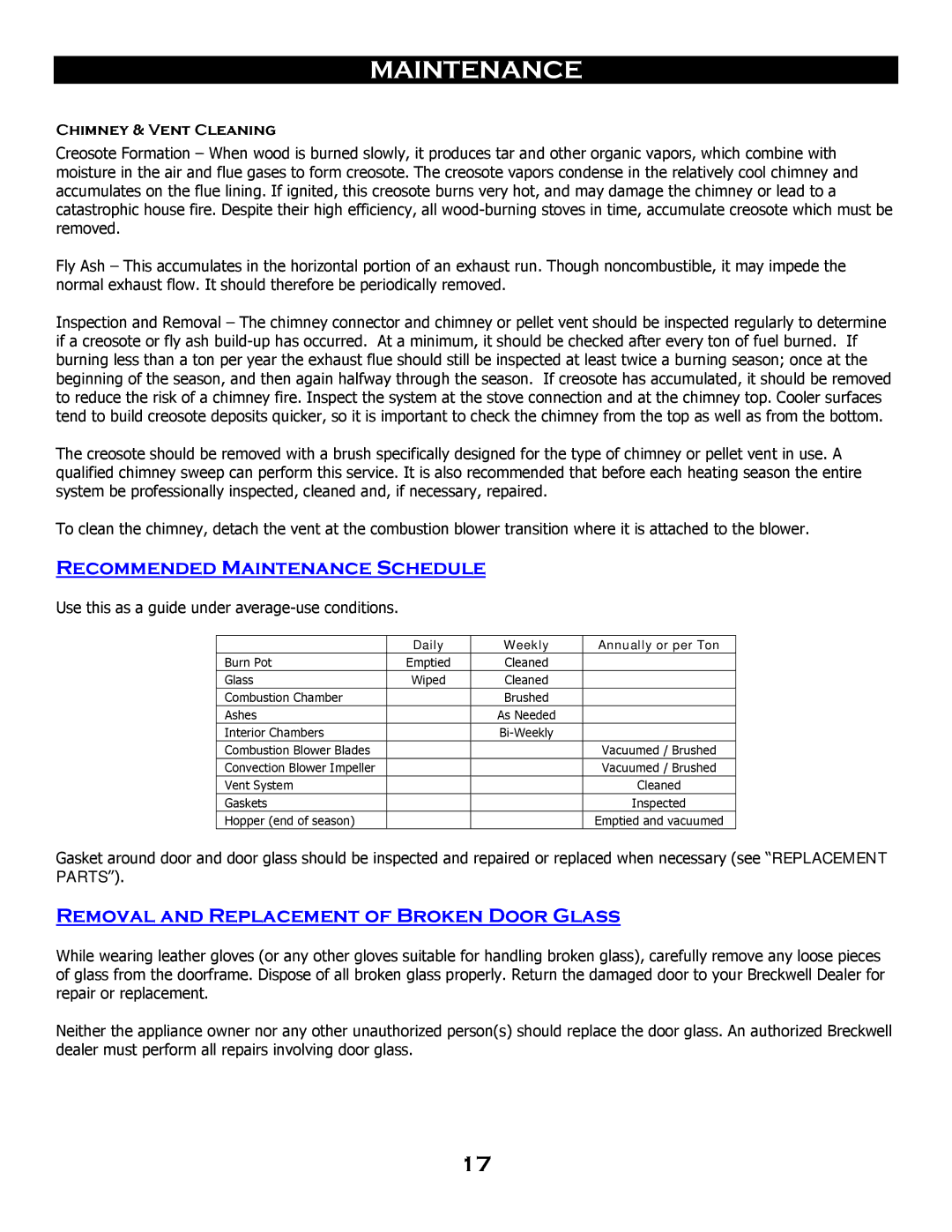MAINTENANCE
Chimney & Vent Cleaning
Creosote Formation – When wood is burned slowly, it produces tar and other organic vapors, which combine with moisture in the air and flue gases to form creosote. The creosote vapors condense in the relatively cool chimney and accumulates on the flue lining. If ignited, this creosote burns very hot, and may damage the chimney or lead to a catastrophic house fire. Despite their high efficiency, all
Fly Ash – This accumulates in the horizontal portion of an exhaust run. Though noncombustible, it may impede the normal exhaust flow. It should therefore be periodically removed.
Inspection and Removal – The chimney connector and chimney or pellet vent should be inspected regularly to determine if a creosote or fly ash
The creosote should be removed with a brush specifically designed for the type of chimney or pellet vent in use. A qualified chimney sweep can perform this service. It is also recommended that before each heating season the entire system be professionally inspected, cleaned and, if necessary, repaired.
To clean the chimney, detach the vent at the combustion blower transition where it is attached to the blower.
Recommended Maintenance Schedule
Use this as a guide under average-use conditions.
| Daily | Weekly | Annually or per Ton |
Burn Pot | Emptied | Cleaned |
|
Glass | Wiped | Cleaned |
|
Combustion Chamber |
| Brushed |
|
Ashes |
| As Needed |
|
Interior Chambers |
|
| |
Combustion Blower Blades |
|
| Vacuumed / Brushed |
Convection Blower Impeller |
|
| Vacuumed / Brushed |
Vent System |
|
| Cleaned |
Gaskets |
|
| Inspected |
Hopper (end of season) |
|
| Emptied and vacuumed |
Gasket around door and door glass should be inspected and repaired or replaced when necessary (see “REPLACEMENT PARTS”).
Removal and Replacement of Broken Door Glass
While wearing leather gloves (or any other gloves suitable for handling broken glass), carefully remove any loose pieces of glass from the doorframe. Dispose of all broken glass properly. Return the damaged door to your Breckwell Dealer for repair or replacement.
Neither the appliance owner nor any other unauthorized person(s) should replace the door glass. An authorized Breckwell dealer must perform all repairs involving door glass.
17
